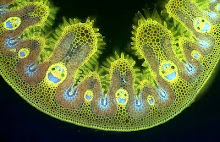The use of foxglove Digitalis purpurea in herbal medicine was described long ago by Greek and Roman herbalists but the scientific investigation of its medicinal properties really began with the investigations carried out by the English botanist and physician William Withering (1741-1799).

Image source: http://en.wikipedia.org/wiki/File:William_Withering.jpg
William Withering was an outstanding botanist and in 1776 published his Botanical Arrangement of All the Vegetables Naturally Growing in Great Britain, a descriptive flora based on Linnaeus's new-fangled system of classifying plants according to the number and disposition of their sexual organs and reducing their Latin names to simple binomials - like Digitalis purpurea. Double-click on the image above and you'll see from the title page that this was an encyclopaedic botanical treatise, covering everything from preparing pressed herbarium specimens to the use of wild plants in herbal medicine, and it's in this book that he first mentions his interest in foxglove: "A dram of it taken inwardly excites violent vomiting." he wrote, " It is certainly a very active medicine, and merits more attention than modern practice bestows upon it."
The story is that the plant caught his attention when a 'wise woman' herbalist introduced him to an infusion of about 20 herbs that she used to treat dropsy (fluid retention caused by congestive heart failure). Withering surmised that the active ingredient was foxglove, that strenthened heart beat and acted as a diuretic, and in 1785 published An Account of the Foxglove and some of its Medical Uses, describing case studies - effectively clinical trials - of patients who he had treated with foxglove. The following is a typical example:
CASE XX.
January 1st. Mr. H——. Hydrops Pectoris; legs and thighs prodigiously anasarcous; a very distressing sense of fulness and tightness across his stomach; urine in small quantity; pulse intermitting; breath very short.[26]
He had taken various medicines, and been blistered, but without relief. His complaints continuing to increase, I directed an infusion of Digitalis, which made him very sick; acted powerfully as a diuretic, and removed all his symptoms.
Stately spires of foxglove flowers, usually growing best on acid soils, are a major attraction for bumblebees in June and early July.
When the bee forces its way in to reach the nectar at the base of the corolla tube its back is dusted with pollen from the yellow stamens positioned overhead. The stigma matures later, in the same position, collecting pollen from bees as they arrive from other foxglove plants.


















